Volume 9-14 (2020-26)
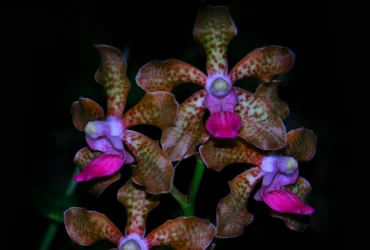 v13i2.335
v13i2.335ISSN: 1800-427X (printed)
eISSN: 1800-427X (online)
DOI:10.47605/tapro.v13i2.335
Submitted date: 29 May 2024
Accepted date: 28 October 2024
Published date: 19 December 2024
Pp. 101–115.
MAMMALS OF THE RUNGAN–KAHAYAN LANDSCAPE, CENTRAL KALIMANTAN, INDONESIA
Namrata B. Anirudh*, Nicolas J. Deere, Erik Estrada, Rahmad Hidayat, Matthew J. Struebig & Jatna Supriatna
*Corresponding author. E-mail: namrata.b.anirudh@gmail.com
Abstract
The Rungan – Kahayan landscape, covering ~4700 km2 in Central Kalimantan is a diverse mosaic of tropical heath (kerangas) and peat swamp forests. The mammal fauna of this region remains poorly documented, while the area has been subjected to rapid land cover changes threatening remaining forest areas. Here we describe the medium–large-sized mammal community in eight community-managed forest blocks and one forest area set aside for education purposes in this landscape. We deployed 86 camera traps across seven habitat types between April 2022 and October 2023, intending to set baselines on mammal presence and distribution within the landscape. The survey recorded 936 independent detections of 24 species, comprising six mammalian orders distributed across 14 families, including three taxa endemic to Borneo. Forest gaps and kerangas habitats recorded the highest independent detections per unit area, despite low-pole and mixed swamps being the most widespread habitat type. The presence of several protected species, including the first detection of otter-civet (Cynogale bennettii) in this area, emphasises the conservation significance of the remaining forests within the landscape. The lesser mouse deer (Tragulus kanchil) and the muntjac (Muntiacus artherodes) were frequently detected. The sambar deer (Rusa unicolor) and bearded pig (Sus barbatus)—common ungulates in lowlands, typically hunted—were rare. Our study represents the first large-scale baseline assessment of mammals in the Rungan-Kahayan landscape, highlighting its significance for animal conservation in Central Kalimantan.
Key words : Borneo, occupancy, relative abundance, sampling effort, species inventory, Southeast Asia
Section Editor: Rosie Drinkwater
eISSN: 1800-427X (online)
DOI:10.47605/tapro.v13i2.335
Submitted date: 29 May 2024
Accepted date: 28 October 2024
Published date: 19 December 2024
Pp. 101–115.
MAMMALS OF THE RUNGAN–KAHAYAN LANDSCAPE, CENTRAL KALIMANTAN, INDONESIA
Namrata B. Anirudh*, Nicolas J. Deere, Erik Estrada, Rahmad Hidayat, Matthew J. Struebig & Jatna Supriatna
*Corresponding author. E-mail: namrata.b.anirudh@gmail.com
Abstract
The Rungan – Kahayan landscape, covering ~4700 km2 in Central Kalimantan is a diverse mosaic of tropical heath (kerangas) and peat swamp forests. The mammal fauna of this region remains poorly documented, while the area has been subjected to rapid land cover changes threatening remaining forest areas. Here we describe the medium–large-sized mammal community in eight community-managed forest blocks and one forest area set aside for education purposes in this landscape. We deployed 86 camera traps across seven habitat types between April 2022 and October 2023, intending to set baselines on mammal presence and distribution within the landscape. The survey recorded 936 independent detections of 24 species, comprising six mammalian orders distributed across 14 families, including three taxa endemic to Borneo. Forest gaps and kerangas habitats recorded the highest independent detections per unit area, despite low-pole and mixed swamps being the most widespread habitat type. The presence of several protected species, including the first detection of otter-civet (Cynogale bennettii) in this area, emphasises the conservation significance of the remaining forests within the landscape. The lesser mouse deer (Tragulus kanchil) and the muntjac (Muntiacus artherodes) were frequently detected. The sambar deer (Rusa unicolor) and bearded pig (Sus barbatus)—common ungulates in lowlands, typically hunted—were rare. Our study represents the first large-scale baseline assessment of mammals in the Rungan-Kahayan landscape, highlighting its significance for animal conservation in Central Kalimantan.
Key words : Borneo, occupancy, relative abundance, sampling effort, species inventory, Southeast Asia
Section Editor: Rosie Drinkwater
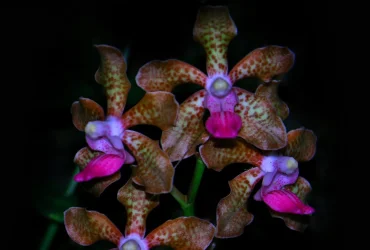 v13i2.334
v13i2.334ISSN: 1800-427X (printed)
eISSN: 1800-427X (online)
DOI:10.47605/tapro.v13i2.334
Submitted date: 19 September 2024
Accepted date: 20 November 2024
Published date: 4 December 2024
Pp. 88–100. Pls. 24–25.
UNVEILING MISIDENTIFICATION OF FORMERLY REPORTED Microhyla fissipes BOULENGER, 1884 (ANURA: MICROHYLIDAE) WITH NOTES ON TWO Microhyla SPECIES FROM SUMATRA
Vestidhia Y. Atmaja, Rury Eprilurahman*, Misbahul Munir, Eric N. Smith, Tuty Arisuryanti, Rosichon Ubaidillah & Amir Hamidy
*Corresponding author. E-mail: rurybiougm@ugm.ac.id
Abstract
Sumatra is widely recognized as a land bridge for the dispersal of amphibians between mainland Asia and the rest of the Indonesian Archipelago. Currently, six species of Microhyla are recognized in Sumatra: M. gadjahmadai, M. nakkavaram, M. palmipes, M. sundaica, M. superciliaris, and M. sriwijaya. Pradana et al. (2017) identified some Microhyla specimens as M. fissipes using molecular analysis (partial sequence of 16S mtDNA). Meanwhile, Yuan et al. (2016) restricted the distribution of M. fissipes to the northeast of the Red River Valley and Taiwan. In this study, we have revised the identification of ‘Microhyla sp. aff. fissipes’ Sumatra sensu Pradana et al. (2017) to M. mukhlesuri, based on both molecular and morphological analyses. Additionally, we report the first site records of M. mantheyi and M. butleri from Sumatra. We reconfirm the diagnostic characters based on their original descriptions and report on the morphological variation of the Sumatran populations of these three species.
Key words : 16S mtDNA, morphology, M. butleri, M. mantheyi, M. mukhlesuri, systematics
Section Editor: Vladislav Gorin
eISSN: 1800-427X (online)
DOI:10.47605/tapro.v13i2.334
Submitted date: 19 September 2024
Accepted date: 20 November 2024
Published date: 4 December 2024
Pp. 88–100. Pls. 24–25.
UNVEILING MISIDENTIFICATION OF FORMERLY REPORTED Microhyla fissipes BOULENGER, 1884 (ANURA: MICROHYLIDAE) WITH NOTES ON TWO Microhyla SPECIES FROM SUMATRA
Vestidhia Y. Atmaja, Rury Eprilurahman*, Misbahul Munir, Eric N. Smith, Tuty Arisuryanti, Rosichon Ubaidillah & Amir Hamidy
*Corresponding author. E-mail: rurybiougm@ugm.ac.id
Abstract
Sumatra is widely recognized as a land bridge for the dispersal of amphibians between mainland Asia and the rest of the Indonesian Archipelago. Currently, six species of Microhyla are recognized in Sumatra: M. gadjahmadai, M. nakkavaram, M. palmipes, M. sundaica, M. superciliaris, and M. sriwijaya. Pradana et al. (2017) identified some Microhyla specimens as M. fissipes using molecular analysis (partial sequence of 16S mtDNA). Meanwhile, Yuan et al. (2016) restricted the distribution of M. fissipes to the northeast of the Red River Valley and Taiwan. In this study, we have revised the identification of ‘Microhyla sp. aff. fissipes’ Sumatra sensu Pradana et al. (2017) to M. mukhlesuri, based on both molecular and morphological analyses. Additionally, we report the first site records of M. mantheyi and M. butleri from Sumatra. We reconfirm the diagnostic characters based on their original descriptions and report on the morphological variation of the Sumatran populations of these three species.
Key words : 16S mtDNA, morphology, M. butleri, M. mantheyi, M. mukhlesuri, systematics
Section Editor: Vladislav Gorin
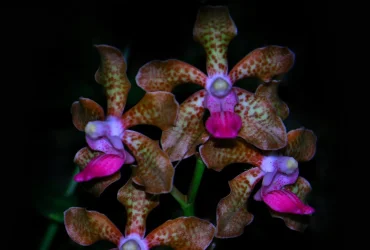 v13i2.333
v13i2.333ISSN: 1800-427X (printed)
eISSN: 1800-427X (online)
DOI:10.47605/tapro.v13i2.333
Submitted date: 9 July 2024
Accepted date: 24 October 2024
Published date: 13 December 2024
Pp. 82–87. Pls. 20–23.
VEGETATION ASSESSMENT NEAR LANDFILLS IN TWO CITIES IN KAZAKHSTAN USING NDVI AND SAVI
Galiya Abisheva, Aigul Kurmanbayeva*, Zulfiya Bayazitova, Anuarbek Kakabayev, Anar Ibrayeva, Natalia Khvatina, Lyudmila Makeyeva & Zhulduz Tleuova
*Corresponding author. E-mail: kurmanbayeva.aig@gmail.com
Abstract
This research aims to assess the environmental impact of municipal solid waste landfills on vegetation in the vicinity of landfill sites, focusing on two cities in Kazakhstan, Stepnogorsk and Kokshetau. The study utilized vegetation indices, specifically the Normalized Difference Vegetation Index (NDVI) and the Soil-Adjusted Vegetation Index (SAVI), to assess the health and density of vegetation. Landsat 8 OLIC2L2 satellite imagery spanning from July to August in the years 2017–2022 was processed in the ArcGIS program. The SAVI was employed to adjust for soil type and vegetation density. In the Stepnogorsk and Kokshetau sanitary zones, NDVI values during summer (2017–2022) ranged from 0.12 to 0.21, with SAVI values for Kokshetau between 0.15 and 0.25. ArcGIS analysis shows increased degradation and desertification, influenced by wind direction. NDVI and SAVI remote sensing effectively assessed vegetation in the sanitary zones of both landfills. The research underscores the significant environmental impact of municipal solid waste landfills on the surrounding vegetation.
Key words : ArcGIS, chlorophyll content, environment, landfills, solid waste, soil pollution
Section Editor: Beybit Nasiyev
eISSN: 1800-427X (online)
DOI:10.47605/tapro.v13i2.333
Submitted date: 9 July 2024
Accepted date: 24 October 2024
Published date: 13 December 2024
Pp. 82–87. Pls. 20–23.
VEGETATION ASSESSMENT NEAR LANDFILLS IN TWO CITIES IN KAZAKHSTAN USING NDVI AND SAVI
Galiya Abisheva, Aigul Kurmanbayeva*, Zulfiya Bayazitova, Anuarbek Kakabayev, Anar Ibrayeva, Natalia Khvatina, Lyudmila Makeyeva & Zhulduz Tleuova
*Corresponding author. E-mail: kurmanbayeva.aig@gmail.com
Abstract
This research aims to assess the environmental impact of municipal solid waste landfills on vegetation in the vicinity of landfill sites, focusing on two cities in Kazakhstan, Stepnogorsk and Kokshetau. The study utilized vegetation indices, specifically the Normalized Difference Vegetation Index (NDVI) and the Soil-Adjusted Vegetation Index (SAVI), to assess the health and density of vegetation. Landsat 8 OLIC2L2 satellite imagery spanning from July to August in the years 2017–2022 was processed in the ArcGIS program. The SAVI was employed to adjust for soil type and vegetation density. In the Stepnogorsk and Kokshetau sanitary zones, NDVI values during summer (2017–2022) ranged from 0.12 to 0.21, with SAVI values for Kokshetau between 0.15 and 0.25. ArcGIS analysis shows increased degradation and desertification, influenced by wind direction. NDVI and SAVI remote sensing effectively assessed vegetation in the sanitary zones of both landfills. The research underscores the significant environmental impact of municipal solid waste landfills on the surrounding vegetation.
Key words : ArcGIS, chlorophyll content, environment, landfills, solid waste, soil pollution
Section Editor: Beybit Nasiyev
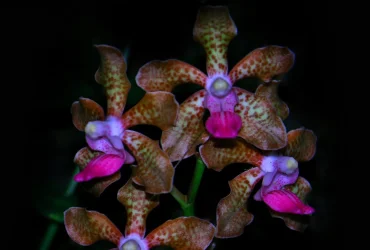 v13i2.332
v13i2.332ISSN: 1800-427X (printed)
eISSN: 1800-427X (online)
DOI:10.47605/tapro.v13i2.332
Submitted date: 30 September 2024
Accepted date: 24 November 2024
Published date: 30 November 2024
Pp. 69–81. Pls. 12–19.
NOTES ON THE Ophisops beddomei COMPLEX (SQUAMATA: LACERTIDAE) WITH THE DESCRIPTION OF A NEW ALLIED CRYPTIC SPECIES FROM WESTERN INDIA
Harshil Patel*, Raju Vyas, Tejas Thackeray, Saunak Pal & Zeeshan A. Mirza
*Corresponding author. E-mail: harshilpatel121@gmail.com
Abstract
The lacertid Ophisops beddomei was considered to be widely distributed in the northern and central Western Ghats, and some parts of western India. Recent studies, however, provide evidence of it being a species complex that harbours several morphologically cryptic species. In an attempt to resolve this species complex, we provide a re-description of O. beddomei sensu stricto based on type specimens and fresh material from near the type locality. Additionally, we describe a new species based on a series of 15 specimens from the states of Gujarat and Maharashtra in western India. The new species is allied to O. beddomei and can be diagnosed from all its congeners by the following suite of characters: a small-sized Ophisops (adult, SVL up to 36 mm); upper eyelid movable; supranasal fused with nasal; two frontonasals; prefrontals not in contact; enlarged tympanic scale present; 46–53 dorsal scales; 28–31 scales at mid-body; 19–21 lamellae underneath the fourth toe; six chin shields; 15–19 scales between symphysis of chin shields and ventral plates; large mental scale, extending beyond first supralabial; 8–11 femoral pores on either side interrupted by 0–1 poreless scales in males and 3–4 poreless scales in females; and subtle colour pattern differences. Molecular data for the mitochondrial cytochrome b gene further supports the distinctiveness of the new species and shows an uncorrected pairwise sequence divergence of 8% from O. beddomei sensu stricto. These are among the only lacertids that inhabit high-elevation plateaus and deciduous forests in the Western Ghats and surrounding hill ranges. The findings also indicate that many other similar habitats may harbour as yet undescribed endemic taxa.
Key words : Endemic, hill ranges, Lacerta, plateau, Snake-eyed lizard, taxonomy
Section Editor: Thasun Amarasinghe
LSID:urn:lsid:zoobank.org
eISSN: 1800-427X (online)
DOI:10.47605/tapro.v13i2.332
Submitted date: 30 September 2024
Accepted date: 24 November 2024
Published date: 30 November 2024
Pp. 69–81. Pls. 12–19.
NOTES ON THE Ophisops beddomei COMPLEX (SQUAMATA: LACERTIDAE) WITH THE DESCRIPTION OF A NEW ALLIED CRYPTIC SPECIES FROM WESTERN INDIA
Harshil Patel*, Raju Vyas, Tejas Thackeray, Saunak Pal & Zeeshan A. Mirza
*Corresponding author. E-mail: harshilpatel121@gmail.com
Abstract
The lacertid Ophisops beddomei was considered to be widely distributed in the northern and central Western Ghats, and some parts of western India. Recent studies, however, provide evidence of it being a species complex that harbours several morphologically cryptic species. In an attempt to resolve this species complex, we provide a re-description of O. beddomei sensu stricto based on type specimens and fresh material from near the type locality. Additionally, we describe a new species based on a series of 15 specimens from the states of Gujarat and Maharashtra in western India. The new species is allied to O. beddomei and can be diagnosed from all its congeners by the following suite of characters: a small-sized Ophisops (adult, SVL up to 36 mm); upper eyelid movable; supranasal fused with nasal; two frontonasals; prefrontals not in contact; enlarged tympanic scale present; 46–53 dorsal scales; 28–31 scales at mid-body; 19–21 lamellae underneath the fourth toe; six chin shields; 15–19 scales between symphysis of chin shields and ventral plates; large mental scale, extending beyond first supralabial; 8–11 femoral pores on either side interrupted by 0–1 poreless scales in males and 3–4 poreless scales in females; and subtle colour pattern differences. Molecular data for the mitochondrial cytochrome b gene further supports the distinctiveness of the new species and shows an uncorrected pairwise sequence divergence of 8% from O. beddomei sensu stricto. These are among the only lacertids that inhabit high-elevation plateaus and deciduous forests in the Western Ghats and surrounding hill ranges. The findings also indicate that many other similar habitats may harbour as yet undescribed endemic taxa.
Key words : Endemic, hill ranges, Lacerta, plateau, Snake-eyed lizard, taxonomy
Section Editor: Thasun Amarasinghe
LSID:urn:lsid:zoobank.org
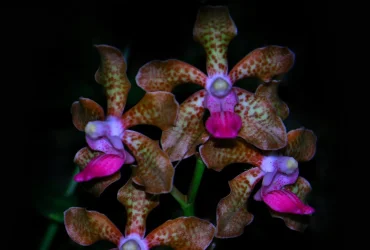 v13i2.331
v13i2.331ISSN: 1800-427X (printed)
eISSN: 1800-427X (online)
DOI:10.47605/tapro.v13i2.331
Submitted date: 17 October 2023
Accepted date: 15 October 2024
Published date: 30 November 2024
Pp. 62–68. Pls. 9–11.
ON THE SYSTEMATIC POSITION OF THE WESTERN GHATS BRONZEBACK Dendrelaphis chairecacos (BOIE, 1827) (SQUAMATA: COLUBRIDAE) WITH RANGE EXTENSION TO GUJARAT
Dikansh S. Parmar*, Mehul N. Thakur, Amrut S. Singh, S.R. Ganesh & Gernot Vogel
*Corresponding author. E-mail: Ophiophagus_hannah10@yahoo.com
Abstract
We report on the molecular phylogenetic position of the Western Ghats bronzeback, Dendrelaphis chairecacos (Boie, 1827), and new sightings from Dangs in Gujarat and Goa State in western India. Based on COI genes sequenced from two samples from Goa and the Dangs, we report that D. chairecacos was 5.59–5.60% (the total percentage of divergence is 5.77%), i.e. with an intraspecific variation of 0.67% nearly about 0.01%, divergent from D. tristis (Indian sample). Our record from the Dangs extends its range northwards by 350 km (from Satara) in the Western Ghats. We also used the geo-referenced and identified photo vouchers posted in citizen science portals to conduct a MaxEnt species distribution modelling for D. chairecacos for the first time. Our analysis run based on 27 data points including the new Dangs record and a previously published doubtful record from Yercaud (Southern Eastern Ghats), showed that the probability of occurrence in both these regions was very low (<20%). Areas in Malabar and the Konkan Coastal Plains from Kanyakumari to the Goa Gap had the highest probability of occurrence (>75%). We uphold the taxonomic ambiguity of the individual from Yercaud lacking loreal scale (as D. cf. chairecacos) and maintain that D. chairecacos s.str. is known only from the Western Ghats. We also re-identified a specimen (ZSI-R-22185) from Goa as D. chairecacos, which may be its earliest precise record from Goa (in 1969). Thus far based on nine preserved and two uncollected specimens mostly from the southern parts of its range, D. chairecacos stands better characterised based on 12 more live specimens, all from the northern parts of its range.
Key words : bronzeback, Gujarat, Konkan Coast, MaxEnt modelling, new record, sequences, Yercaud
Section Editor: Suranjan Karunarathna
eISSN: 1800-427X (online)
DOI:10.47605/tapro.v13i2.331
Submitted date: 17 October 2023
Accepted date: 15 October 2024
Published date: 30 November 2024
Pp. 62–68. Pls. 9–11.
ON THE SYSTEMATIC POSITION OF THE WESTERN GHATS BRONZEBACK Dendrelaphis chairecacos (BOIE, 1827) (SQUAMATA: COLUBRIDAE) WITH RANGE EXTENSION TO GUJARAT
Dikansh S. Parmar*, Mehul N. Thakur, Amrut S. Singh, S.R. Ganesh & Gernot Vogel
*Corresponding author. E-mail: Ophiophagus_hannah10@yahoo.com
Abstract
We report on the molecular phylogenetic position of the Western Ghats bronzeback, Dendrelaphis chairecacos (Boie, 1827), and new sightings from Dangs in Gujarat and Goa State in western India. Based on COI genes sequenced from two samples from Goa and the Dangs, we report that D. chairecacos was 5.59–5.60% (the total percentage of divergence is 5.77%), i.e. with an intraspecific variation of 0.67% nearly about 0.01%, divergent from D. tristis (Indian sample). Our record from the Dangs extends its range northwards by 350 km (from Satara) in the Western Ghats. We also used the geo-referenced and identified photo vouchers posted in citizen science portals to conduct a MaxEnt species distribution modelling for D. chairecacos for the first time. Our analysis run based on 27 data points including the new Dangs record and a previously published doubtful record from Yercaud (Southern Eastern Ghats), showed that the probability of occurrence in both these regions was very low (<20%). Areas in Malabar and the Konkan Coastal Plains from Kanyakumari to the Goa Gap had the highest probability of occurrence (>75%). We uphold the taxonomic ambiguity of the individual from Yercaud lacking loreal scale (as D. cf. chairecacos) and maintain that D. chairecacos s.str. is known only from the Western Ghats. We also re-identified a specimen (ZSI-R-22185) from Goa as D. chairecacos, which may be its earliest precise record from Goa (in 1969). Thus far based on nine preserved and two uncollected specimens mostly from the southern parts of its range, D. chairecacos stands better characterised based on 12 more live specimens, all from the northern parts of its range.
Key words : bronzeback, Gujarat, Konkan Coast, MaxEnt modelling, new record, sequences, Yercaud
Section Editor: Suranjan Karunarathna
Hubungi Kami
The ultimate aim of the journal is to provide an effective medium for communication of the latest and best scientific information.
Copyright © 2020 Taprobanica. All Rights Reserved
Jasa Pembuatan Website by IKT




